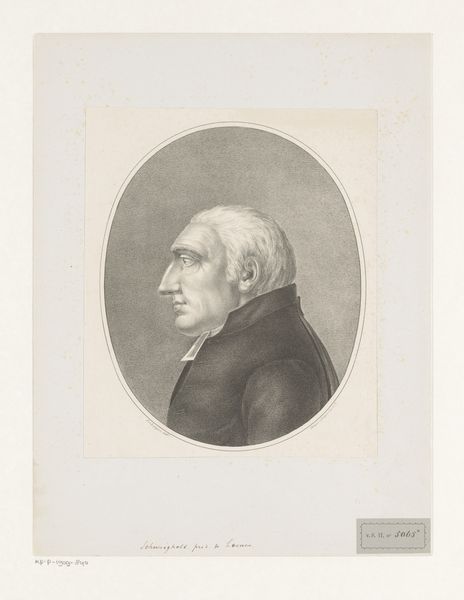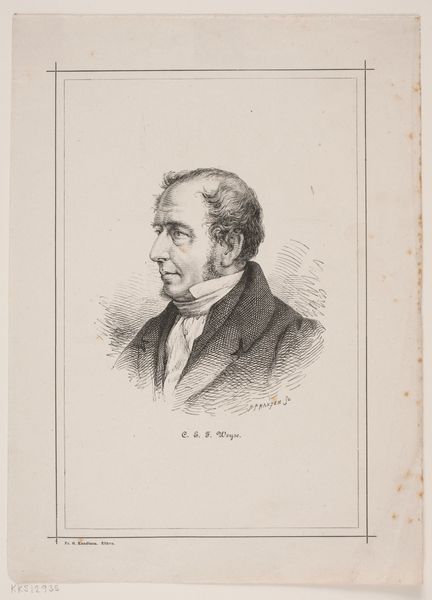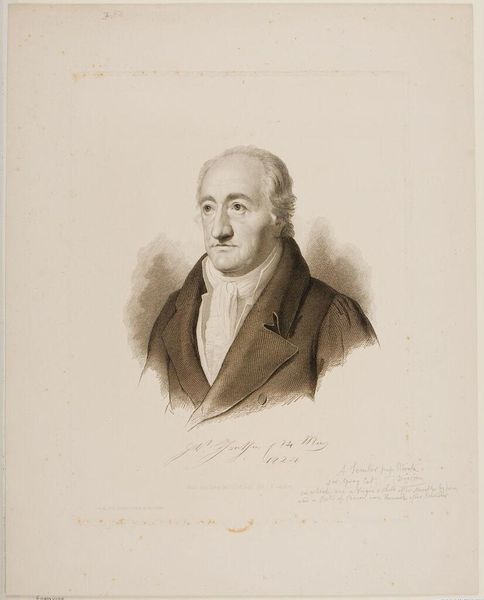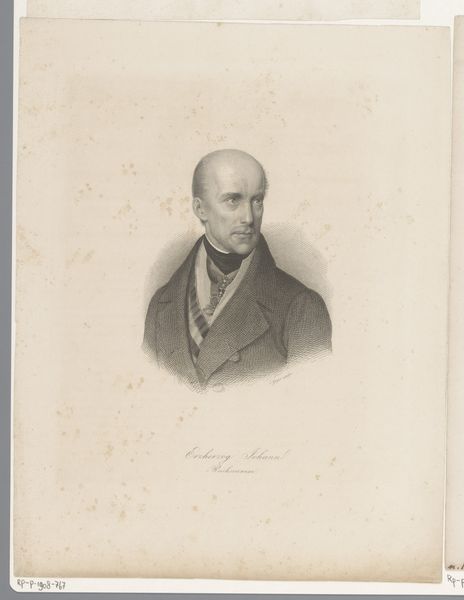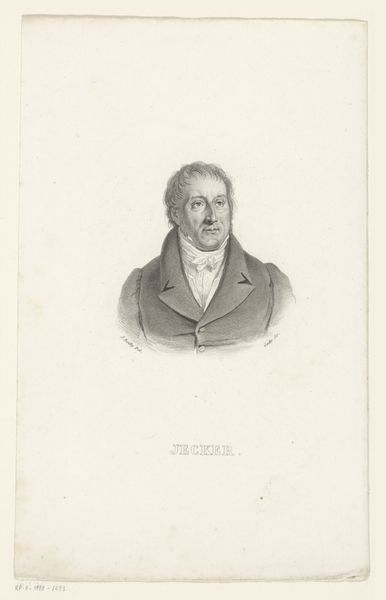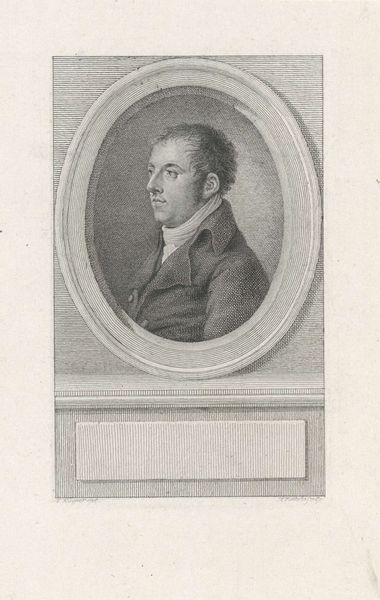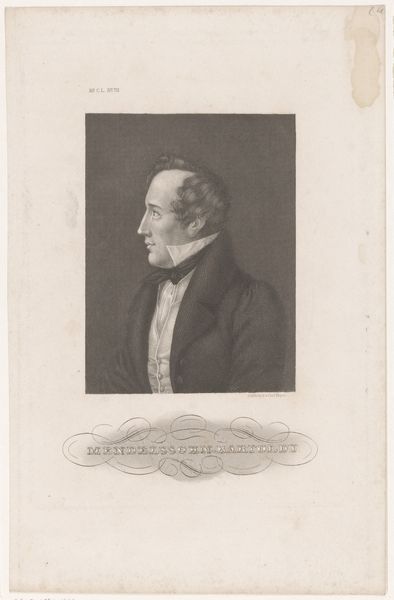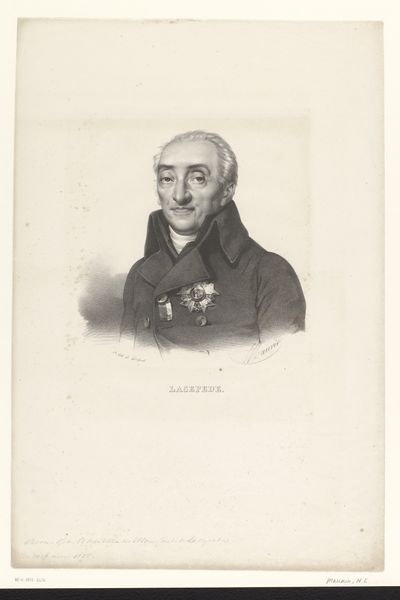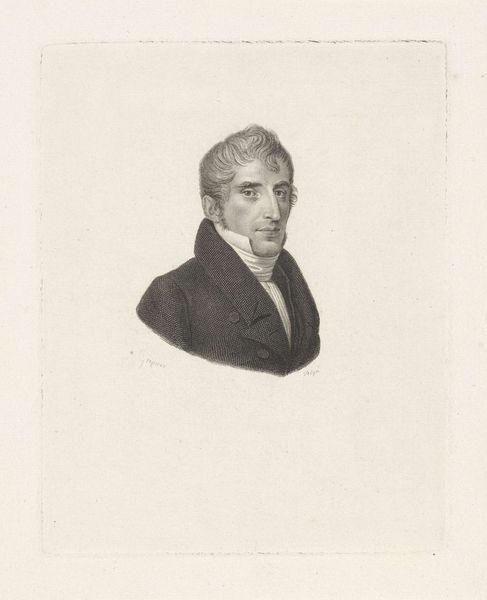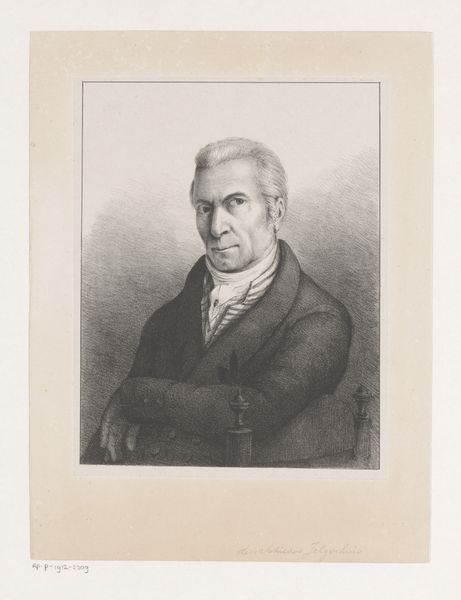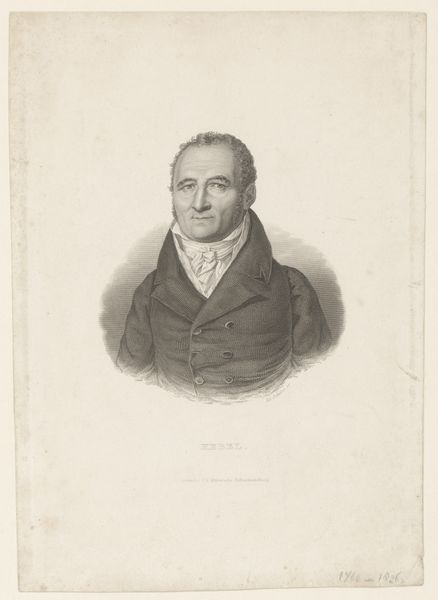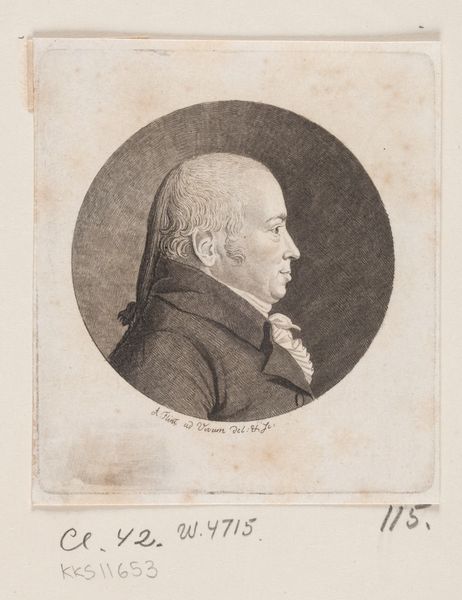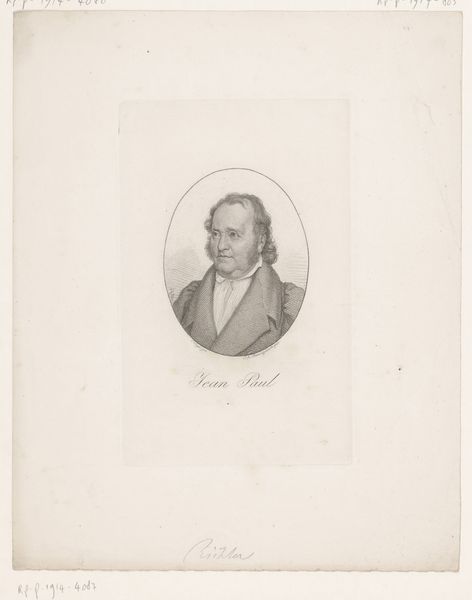
print, engraving
#
portrait
# print
#
caricature
#
portrait reference
#
pencil drawing
#
romanticism
#
portrait drawing
#
engraving
Dimensions: 317 mm (height) x 208 mm (width) (bladmaal)
Curator: Here we have a portrait of C.E.F. Weyse, dating roughly between 1834 and 1866, currently held at the SMK, Statens Museum for Kunst. The work, executed in engraving, captures Weyse in profile. Editor: It strikes me as rather…stuffy. All those careful lines, the stiff collar, the rather severe expression. It seems very representative of its time, wouldn't you say? Curator: Absolutely. This portrait reflects the prevailing artistic and social climate. Consider the historical context: Weyse was a prominent composer, deeply embedded in the Danish cultural establishment. A print like this solidifies his place in the public imagination and perpetuates a specific image of respectability and accomplishment. Editor: So, the "establishment" dictating not just artistic taste but acceptable portrayals of its key figures? Do you think there is a class element at play here? Curator: Undoubtedly. Access to portraiture, especially in the form of engravings meant for wider circulation, was indicative of social standing. Furthermore, these images were carefully crafted to convey certain values - sobriety, intelligence, authority – reinforcing societal hierarchies. The gaze, slightly averted, maintains a distance, perhaps symbolizing the artist's revered position. Editor: I find myself wondering how Weyse himself felt about this representation. Was he a willing participant in shaping his own image for posterity? And how much does this polished depiction obscure the complexities of his life and work? What narratives of queerness, struggle, or conflict are deliberately erased to uphold this ideal of the accomplished bourgeois composer? Curator: Those are crucial questions. Examining the reception of this print among Weyse’s contemporaries and subsequent audiences can illuminate how such imagery contributes to constructing a carefully curated historical narrative, influencing perceptions across generations. Also the fact that its classified as a Caricature, while looking formal raises even more interesting discussion points. Editor: Indeed. It forces us to acknowledge the inherent power dynamics embedded within even seemingly straightforward portraiture. It becomes less about individual likeness and more about the social construction of identity and legacy. I walked away contemplating how artists and cultural institutions navigate these complexities today.
Comments
No comments
Be the first to comment and join the conversation on the ultimate creative platform.
